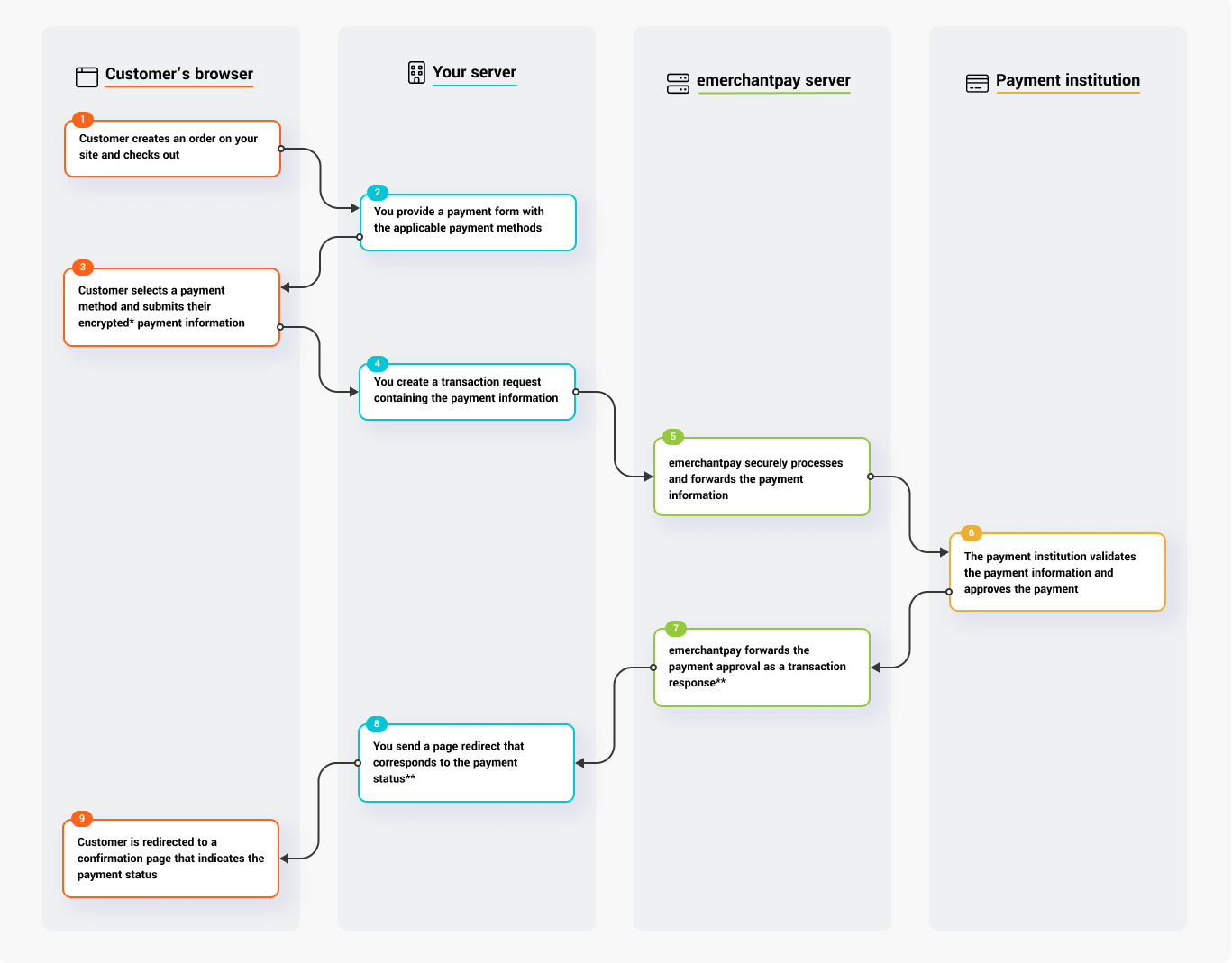Server-to-server integration
Customise your integration with the emerchantpay API.
Use the emerchantpay API to build your own payment form and host it on your servers. This integration allows for maximum customisation, but requires dedicated development resources and complex network security configuration to securely store customer data.
Use an emerchantpay server-to-server integration for:
- Full customisation – build your own storefront and checkout page
- API and SDK support – connect to the Genesis payment gateway using the emerchantpay API and SDK libraries in a range of languages
- Credit and debit card payments – accept card payments including Visa and Mastercard
- Payment options – global and regional payment methods:
- Client-side encryption – lower your PCI DSS compliance requirement by securing your customer’s data through their browser
To proceed with this solution, you must have an emerchantpay merchant account. Apply for a merchant account by filling out and submitting this contact form.
You will be assigned an emerchantpay Account Manager, who will provide you with credentials and assist you with any of emerchantpay’s payment solutions.After integration, you redirect your customer to your checkout page when they are ready to finalise an order on your website. On your checkout page, you gather and store* your customer’s payment information through a web form, and display the applicable payment methods. You send the payment information to emerchantpay, and emerchantpay securely processes and authenticates this information with the payment institution. After emerchantpay confirms the payment**, you redirect your customer to a payment confirmation page where they can see a summary of their order or any additional steps to follow.

*To store customer payment information, you must meet the highest level of PCI DSS compliance . emerchantpay’s client-side encryption encrypts customer data in their browser and can reduce your compliance requirements.
**For asynchronous payment methods—those that require input from your customer to complete the transaction—the payment confirmation may be delayed while the customer completes the payment.